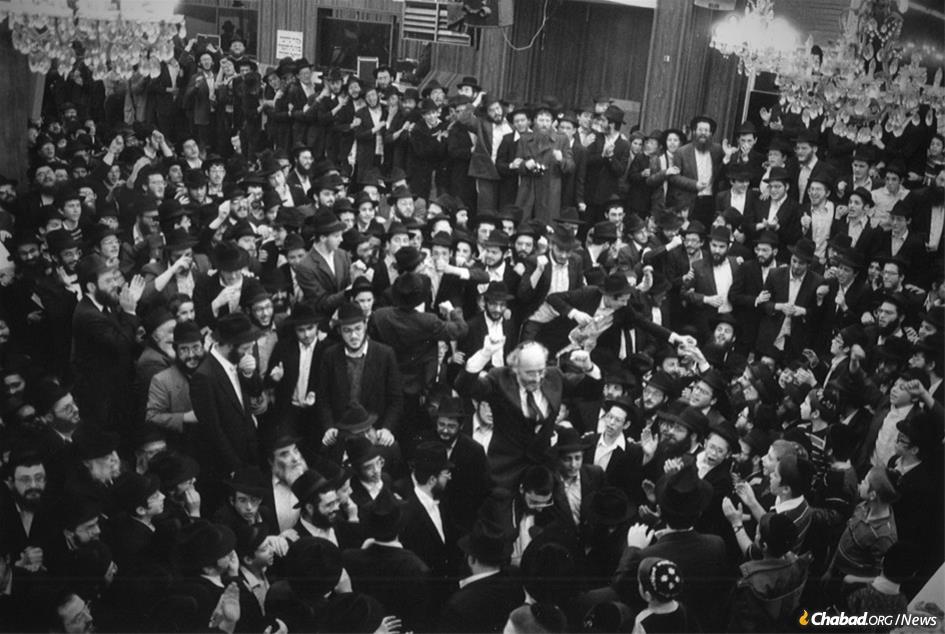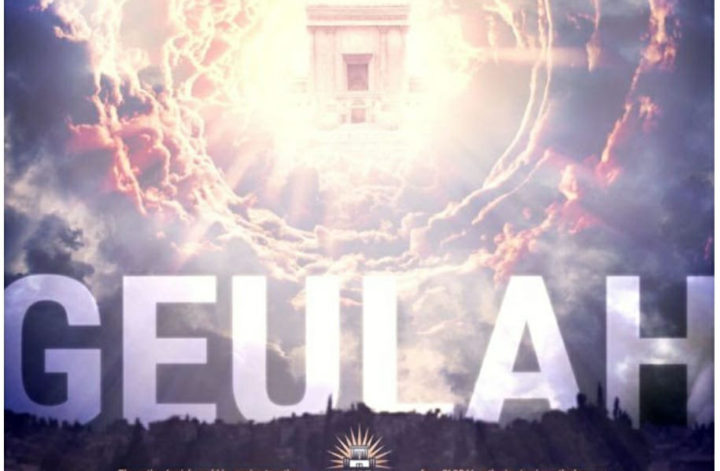At the point when Nathan Lewin addresses the virtual International Conference of Chabad-Lubavitch Emissaries (Kinus Hashluchim) as its feature this Sunday evening, there will be no requirement for a presentation. Over the past 50 years, Lewin has become well known as a gifted litigator and become acclaimed as one of the country’s superior safeguards of the Bill of Rights, especially the strict freedoms revered in the First Amendment.

Having begun his lawful vocation clerking for Supreme Court Justice John M. Harlan II in the last part of the 1950s, at that point proceeding to work in Robert F. Kennedy’s Justice Department—Kennedy sent the youthful Shabbat-noticing man to Nashville, Tenn., to help arraign Jimmy Hoffa, and he later filled in as representative partner principal legal officer for social equality—prior to going through a long time in private practice, the 84-year-old Lewin keeps on standing out as truly newsworthy.
Lewin and his little girl, Alyza Lewin, spoke to Menachem Zivotofsky for a very long time in his family’s mission to have Jerusalem, Israel, written in Zivotofsky’s U.S. identification. Zivotofsky was simply allowed such an identification at the U.S. international safe haven in Jerusalem this October. Lewin in like manner came up during the ongoing Supreme Court designation measure, depicting now-Justice Amy Coney Barrett’s work for Jewish causes while she was a youthful partner at Lewin’s law office in 1999-2000, including the free protection of a public menorah show in Jersey City, N.J. Barrett filled the seat of the late Justice Ruth Bader Ginsburg, with whom Lewin had a long and warm relationship. Truth be told, Ginsburg’s office called Lewin soon after she joined the Supreme Court for his direction in fastening a mezuzah to her chambers.
All through his vocation, Lewin has been known to be an enthusiastic backer for causes he accepts to be simply. “In interviews,” The New York Times expounded on him in a 1988 profile while he was protecting U.S. Principal legal officer Edwin Meese, “a few legal counselors, most audacious admirers of Mr. Lewin, blamed him for in some cases being excessively vigorous in his promotion—an analysis Mr. Lewin acknowledges. ‘I get … diverted by what I believe is correct,’ ” he told the paper.
Maybe it was this, just as his standing for persistence—10 years sooner, Lewin sued the Times into letting it out had blundered and giving a remedy relating to Lewin’s time shielding previous President Richard Nixon—that in the late spring of 1985 grabbed the eye of Rabbi Yehuda Krinsky, administrator of Merkos L’Inyonei Chinuch, the instructive arm of the Chabad-Lubavitch development, and a secretary of the Rebbe, Rabbi Menachem M. Schneerson, of noble memory.
A few months sooner, curators at the Library of Agudas Chassidei Chabad had seen that uncommon books from its invaluable chronicle assortment were disappearing. Reconnaissance film demonstrated this to be crafted by the irritated grandson of the Sixth Rebbe, Rabbi Yosef Yitzchak Schneersohn, of exemplary memory, who in the wake of being gone up against asserted the books to be his own legacy. At the point when he would not quit selling these important books on the open market, Krinsky
“I got a bring in the night from Rabbi Krinsky,” Lewin reviews to Chabad.org. “That is the way it started on my end.”
Lewin promptly looked for and acquired a limiting request charging the grandson from selling anything else of the books in his ownership, and afterward documented suit in government court in Brooklyn to set up, as the Rebbe kept up, that the library was a shared belonging having a place with the Chabad-Lubavitch people group. The Rebbe didn’t say something regarding each progression of the protection’s work, demanding this was the function of the group of legal counselors drove by Lewin, however gave knowledge that end up being vital.
“In our underlying gathering [of lawyers] with the Rebbe he pointed at the letter composed [by the Sixth Rebbe] to [Alexander] Marx [the custodian of Jewish Theological Seminary in New York] as the key,” says Lewin. In it, the Sixth Rebbe had clarified that the library was not his very own property but rather an important asset for the whole Jewish individuals, and had a place with the development he drove. “We featured that bit of proof and Judge [Charles] Sifton therefore cited it completely.”
“The Rebbe was absolutely insightful of each progression we were taking, he read the records, all the pretrial procedures,” reviews Lewin. “I was astonished by how comfortable he was with all that had been said during the hearings.”
The months Lewin spent carrying to and fro between Washington, D.C., and New York planning for the case, trailed by the 23-day-long preliminary, at last paid off. On Hei Tevet 5747 (Jan. 6, 1987), Sifton decided that the library completely had a place with the Lubavitch development. During a time before WhatsApp, the news soared the world over with celebration breaking out at Chabad base camp in Crown Heights, Brooklyn—a short good ways from the government town hall in downtown Brooklyn—just as temples and Jewish people group all over the place.
“I need to state that the Nat Lewin I met eighteen months back isn’t a similar Nat Lewin … that we’re going to get with,” Krinsky told a stuffed, euphoric crowd at a celebratory occasion held two evenings after the court triumph. “This is the Nat Lewin—Reb Nosson Lewin—who will be expounded on for ages … throughout the entire existence of Lubavitch as one of the legends of this [painful story].”
“I think each other legal counselor in the United States has begrudged me throughout the previous two days,” Lewin advised the group to extraordinary commendation. ” … There’s no attorney in the United States whose triumph in court has been met by … days … also, evenings of moving and singing and bliss in the roads!”
After ten months, on Nov. 17, 1987, the 25th day of Cheshvan—precisely 33 years back—the United States Court of Appeals for the Second Circuit consistently maintained Sifton’s area court administering.
“I thought we had an incredibly, solid ground for supporting Judge Sifton’s choice, so I was pretty certain about terms of the allure,” reflects Lewin. “In any case, it was surely a brachah [blessing] that it was confirmed.”
Menorahs and Light
Lewin has battled innumerable strict freedoms cases in his times of training, especially those relating to the Jewish people group. Among the cases he has contended, including handfuls under the watchful eye of the Supreme Court, have been the privileges of Jews to wear kippahs and whiskers in the military; the sympathy of shechitah; and the option to put a Chanukah menorah on open property. As his little girl and law accomplice at Lewin and Lewin, Alyza, has brought up, “there is no legitimate issue that has confronted the Jewish people group in the United States in the past 50 years that doesn’t have Nathan Lewin’s fingerprints on it.”
Obviously, the milestone menorah case and the many subsequent meet-ups Lewin battled have a specific association with the 5,000 Chabad messengers he will be addressing on Sunday. Not long after the Rebbe first dispatched his Chanukah mindfulness crusade in the mid 1970s, Chabad messengers—first in Philadelphia and San Francisco, at that point around the nation—started raising monster public menorahs to share the message and motivation of the Chanukah lights with everyone. This incorporated a 36-foot-high menorah raised outside of the White House, introduced by President Jimmy Carter in 1979.
Chabad of Western Pennsylvania took action accordingly in 1982, setting a menorah outside of Pittsburgh’s City Hall with the chairman’s authorization and cooperation. After four years, the American Civil Liberties Union sued Pittsburgh and Allegheny County, a case that wended its way to the Supreme Court of the United States. Lewin would be the one to protect the Jewish people groups’ entitlement to put a menorah on open property.
At last, Lewin disclosed to a group of people at One-to-One, a 12-hour discussion held at the New York Public Library in 2016 investigating the Rebbe’s social effect, it was the tale of “how the Rebbe won … also, changed the course of First Amendment law in the United States.”
Lewin addresses the group at 770 on Hei Teves.
Lewin addresses the group at 770 on Hei Teves.
In a 6-3 choice passed on the most recent day of their meeting in July of 1989, the Supreme Court managed for the lawfulness of the menorah. Equity Henry Blackmun’s larger part sentiment even contained the gift for lighting the Chanukah menorah—twice. The case didn’t end there. At the point when the new city hall leader of Pittsburgh denied the menorah demand the following year, Lewin eventually got a crisis administering from Justice William Brennan, got an hour prior Shabbat and the beginning of Chanukah that year, permitting the menorah to go up by and by.
For Pittsburgh’s situation, the menorah had remained close to occasion images of different religions, thus in 1992, Chabad’s menorah in Grand Rapids, Mich., was tested in light of the fact that it remained solitary, unaccompanied by some other images. By and by, Lewin effectively shielded the menorah, as he did in cases that followed. While Lewin keeps on helping anybody wishing to put a menorah on open property right up ’til the present time, at this point, because of his work, the legalities encompassing the theme involve settled law.
“The menorah suit in the United States was an ideal case of how the Rebbe’s emphasis on a mentality towards religion in America at last won,” Lewin advised the crowd at One-to-One.
Lewin has for quite some time been a natural face at the Kinus. “I put forth an attempt to come since this is consistently an astonishing demonstration of Jewish soul and the overall effect that Chabad has,” he told this author at the 2013 meeting. “You sense it in the room when you come here together.”
His tending to the current year’s assembling—all virtual thus not the same as the tangible energy felt when the great many messengers and their visitors occupy one monster room—is even more powerful considerin


